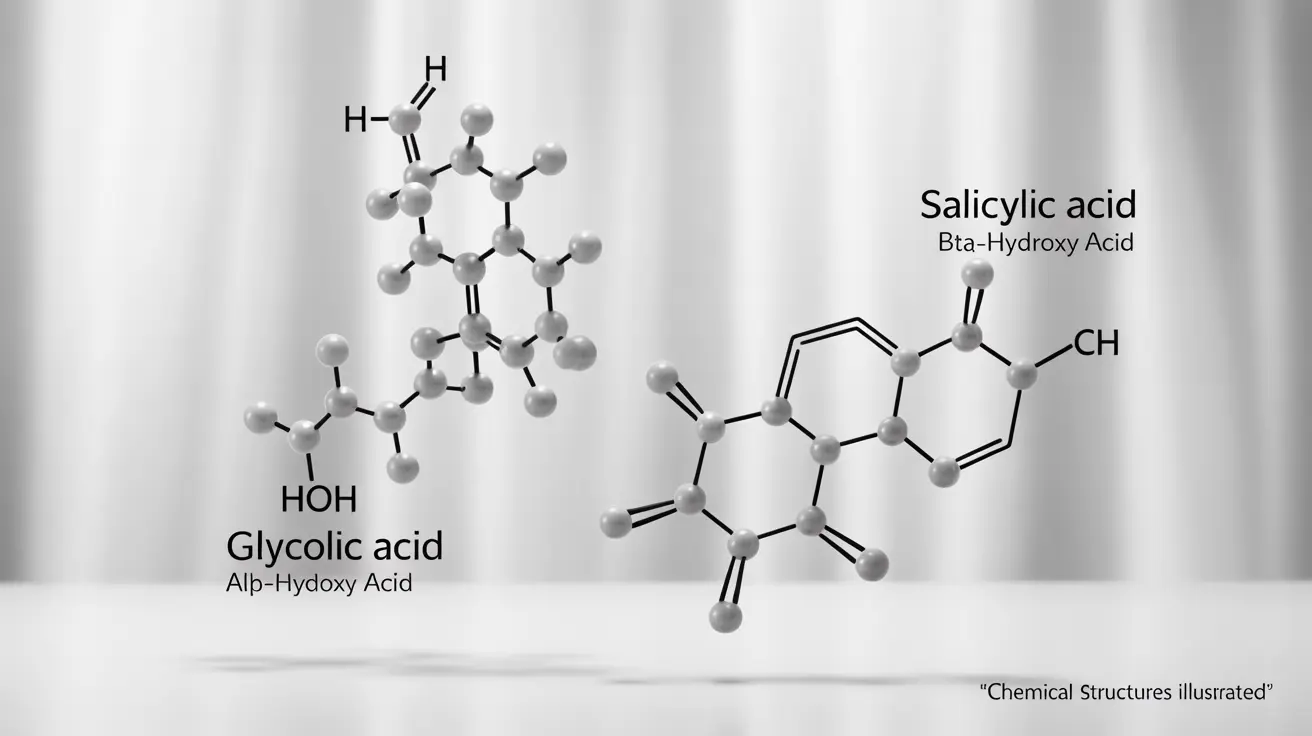When it comes to chemical exfoliants in skincare, glycolic acid and salicylic acid are two powerhouse ingredients that often compete for attention. While both acids can improve skin texture and appearance, they work differently and target distinct skin concerns. Understanding these differences is crucial for choosing the right acid for your specific skincare needs.
This comprehensive guide will help you understand the unique properties of each acid, their benefits, and how to incorporate them into your skincare routine effectively.
Understanding the Basics: Glycolic vs Salicylic Acid
Glycolic acid belongs to the alpha-hydroxy acid (AHA) family and is derived from sugarcane. It features the smallest molecular size among AHAs, allowing for deeper penetration into the skin. This water-soluble acid works primarily on the skin's surface by breaking down the bonds between dead skin cells.
Salicylic acid, on the other hand, is a beta-hydroxy acid (BHA) derived from willow bark. Being oil-soluble, it can penetrate deep into pores and dissolve excess oil and debris. This unique property makes it particularly effective for treating acne and blackheads.
Key Benefits and Properties
Glycolic Acid Benefits
- Promotes cell turnover
- Improves skin texture and tone
- Reduces fine lines and wrinkles
- Enhances skin brightness
- Helps with hyperpigmentation
- Increases collagen production
Salicylic Acid Benefits
- Unclogs pores
- Reduces inflammation
- Controls excess oil production
- Prevents acne breakouts
- Exfoliates inside the pore
- Calms redness and irritation
Choosing the Right Acid for Your Skin Type
For Acne-Prone Skin
Salicylic acid typically works better for acne-prone skin due to its oil-soluble nature and ability to penetrate pores. It effectively treats and prevents breakouts while reducing inflammation and excess oil production.
For Aging Skin
Glycolic acid is often the preferred choice for addressing signs of aging. Its ability to stimulate collagen production and improve skin texture makes it excellent for treating fine lines, wrinkles, and uneven skin tone.
For Combination Skin
Some people may benefit from using both acids strategically. However, it's essential to introduce them gradually and use them on alternate days to prevent irritation.
Safety and Usage Guidelines
When incorporating either acid into your skincare routine, start with lower concentrations and gradually increase frequency as your skin builds tolerance. Always use sunscreen during the day, as both acids can increase sun sensitivity.
Potential Side Effects
- Skin irritation
- Redness
- Dryness
- Peeling
- Increased sun sensitivity
- Temporary stinging sensation
Frequently Asked Questions
What's the difference between glycolic acid and salicylic acid for skincare?
Glycolic acid is water-soluble and works on the skin's surface to remove dead skin cells and improve texture, while salicylic acid is oil-soluble and penetrates pores to address acne and oil-related concerns.Which is better for acne-prone skin: glycolic acid or salicylic acid?
Salicylic acid is generally better for acne-prone skin because it can penetrate pores, reduce inflammation, and control excess oil production. However, some people may benefit from using both acids strategically.Can I use both glycolic acid and salicylic acid in my skincare routine?
Yes, you can use both acids, but it's important to introduce them gradually and use them on alternate days to prevent irritation. Start with lower concentrations and monitor your skin's response.Is glycolic acid or salicylic acid better for aging or uneven skin tone?
Glycolic acid is typically better for aging concerns and uneven skin tone because it promotes collagen production, increases cell turnover, and helps improve overall skin texture and brightness.What are the possible side effects of using glycolic acid or salicylic acid?
Common side effects include temporary irritation, redness, dryness, peeling, and increased sun sensitivity. These effects can be minimized by starting with lower concentrations and gradually increasing usage while maintaining proper sun protection.




